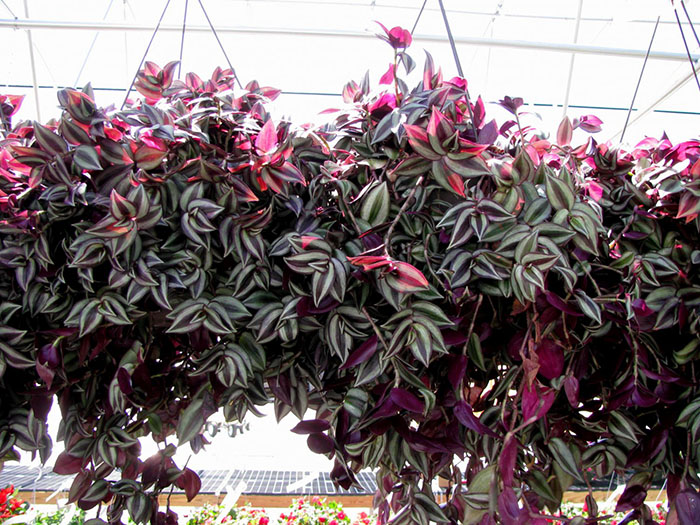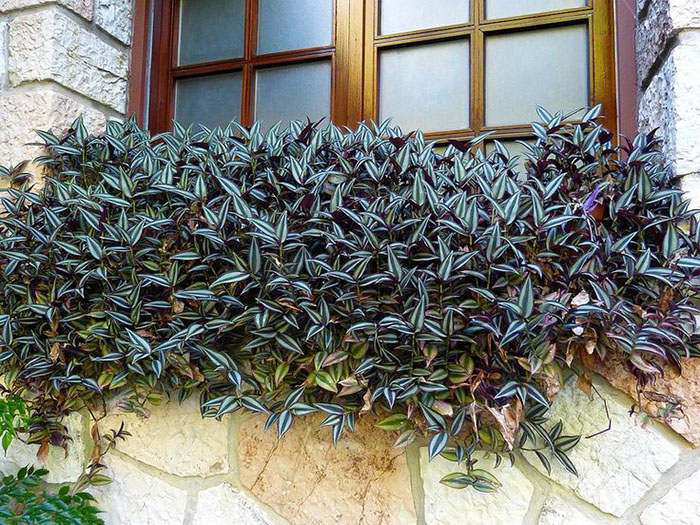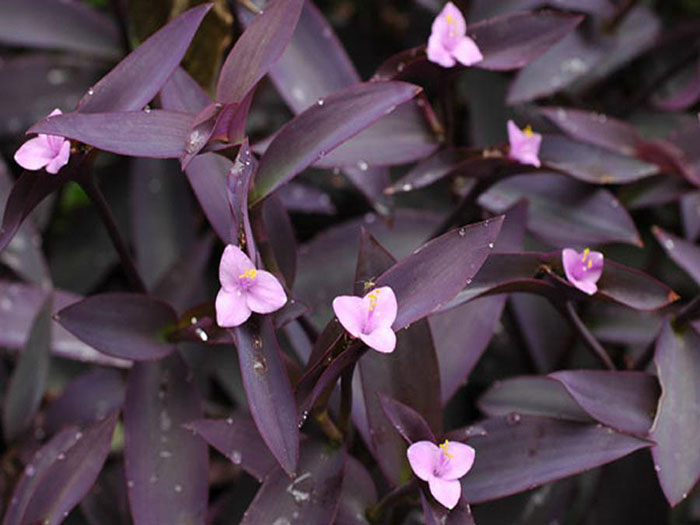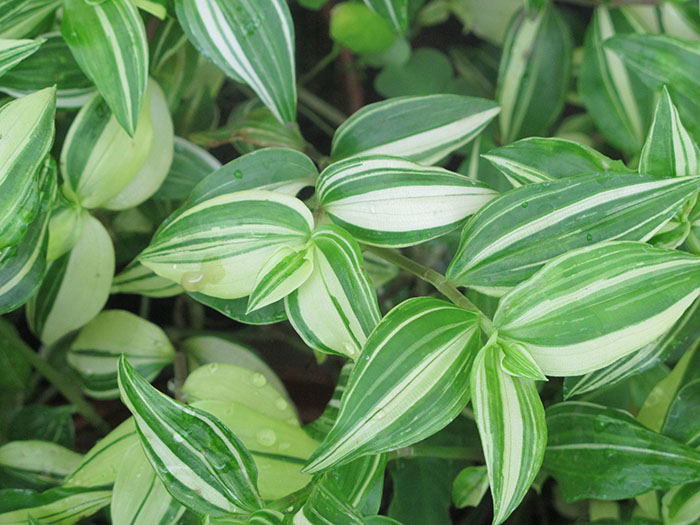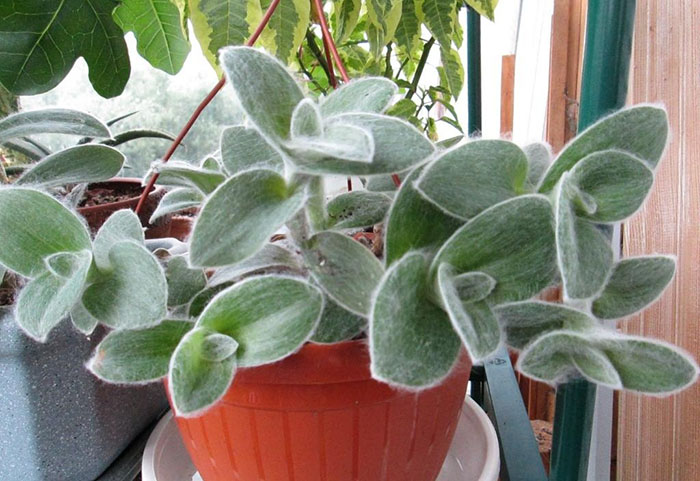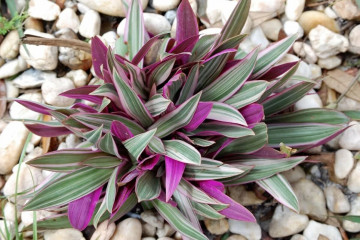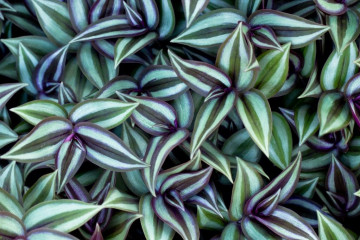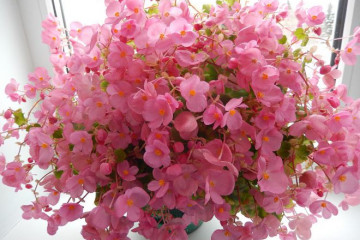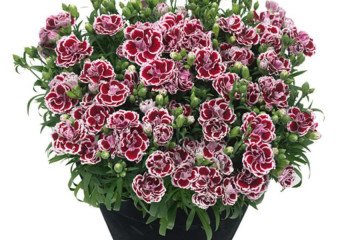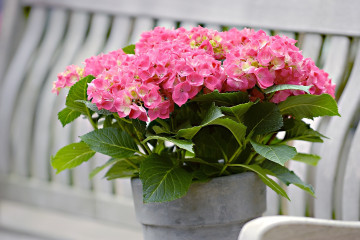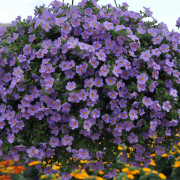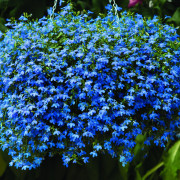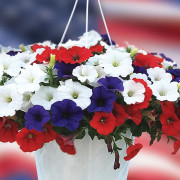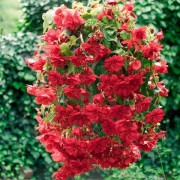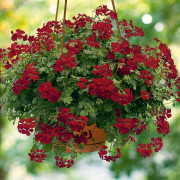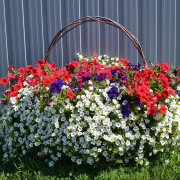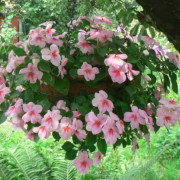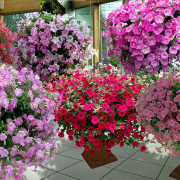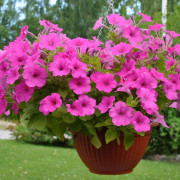Tradescantia room - home care
Content:
About sixty species are combined into the genus Tradescantia, which was named after the skilled Flemish gardener and naturalist John Tradescant. The birthplace of Tradescantia is the marshlands of northern and tropical America. Like other representatives of the Kommelinov family, Tradescantia is unpretentious, but many varieties cannot stand frost, which is why they are grown as indoor plants.
What does it look like, which family it belongs to
Tradescantia is one of the most common indoor plants. Her flowers are small, modest. The fruits are small, leaf-like capsules, each of which contains several seeds.
The ampel plant is used for landscaping both brightly lit rooms and shaded rooms. Indoor Tradescantia looks good on high stands and in hanging pots, arches and niches are decorated with it. By combining different views, hanging gardens can be created, giving the room space a sense of lightness and airiness.
The chemical composition of the plant determines the ability to cleanse the air from harmful impurities and increase the humidity of the external environment. The phytoncides secreted by Tradescantia inhibit the growth of fungi and bacteria.
Tradescantia has ampelous and healing properties, which has long been noticed by folk medicine. Diluted fresh juice is used for sore throat rinsing, and the nose is washed with broth. Tinctures are used to cleanse the intestines. In places of natural growth, flower sap is used as a wound healing agent, lubricating cuts and bruises with it.
Tradescantia home care
All indoor types are unpretentious. They prefer diffused light, and variegated varieties are more demanding on lighting. Grow well in a wide temperature range: 12-25 ℃ above zero. In a warm room with dry air, it is advisable to spray the plants. In summer, all types can be taken out on the balcony or planted in open ground.
Transplant and formation of a bush
They can grow in any soil, but a mixture of three parts of leafy earth and one part each of humus, peat and perlite is most suitable for them. For variegated varieties, the amount of humus is halved, replacing it with perlite.
It is recommended to simultaneously rejuvenate the plant by cutting off the elongated shoots. During the year, the tops are pinched to form a compact bush. Faded inflorescences and damaged shoots are promptly removed.
Top dressing and watering
Fertilized twice a month with a complex mineral fertilizer. Regular watering is required, without moisture stagnation. In winter, it is cut. To preserve variegation, flowers with this feature are fed with phosphorus-potassium fertilizers.
Bloom
If the plant is well looked after, it can bloom at any time of the year, but in summer it is most abundant.The small flowers of Tradescantia pink, which form in the axils of the leaves, give it a special appeal. There are varieties with flowers of white, pink, blue, purple hues. Cold wintering with sparse watering stimulates flowering.
During flowering, no specific care is needed, except that spraying should be excluded so as not to damage the flowers. Flowering specimens are fertilized regularly.
Reproduction
Tradescantia takes root well and grows rapidly. To propagate a plant, the following methods are used:
- The division of the bush is carried out during transplantation. The bush is carefully divided into two or three parts, depending on its capacity, and seated in separate containers. At the same time, several shoots are left in each part to form a lush plant.
- Cutting is the easiest and fastest way. Cut off cuttings with 2-3 nodes with a sharp knife. Plants take root quickly in both water and soil. By planting several cuttings in a pot, a decorative specimen is quickly obtained.
- Seed propagation is the most time consuming option. In spring, seeds are sown in a mixture of peat and sand, moistened and covered with foil. To get a full-fledged bush, you will have to wait several months.
Growing problems
Hardy tradescantia domesticated rarely gets sick and is attacked by pests. If the plant is planted in the garden in summer, there may be problems with aphids and spider mites. Slugs love to feast on juicy leaves. In the fall, before bringing a perennial plant into the house, it must be treated with insectoacaricides, for example, phytoverm.
Dry edges and tips of leaves indicate excessive dryness of the air. In this case, you need to humidify the air with a sprayer and pour wet pebbles into the pan.
Pale color can be the result of both excessive and insufficient lighting. The optimal location of the tradescantia in the room is determined empirically, trying various options.
Popular types
Due to the fact that the dormant period of Tradescantia is not pronounced, they retain their decorative effect all year round, for which they are especially appreciated by flower growers. The following types are most common in indoor plant growing:
- White-flowered Tradescantia (white) is suitable even for the most shaded rooms. This species has long herbaceous shoots with alternating small leaves. The leaf plates are oval, with a sharp top, soft and shiny. There are varieties with bright green, white-green and tricolor leaves. It blooms quite rarely, with small white flowers. Used as an ampelous plant.
- Tradescantia virginiana has erect stems and dark green narrow leaves 2-3 cm long. There are specimens with flowers of blue, pink, white and purple hues. It is often used as a garden species.
- The delicate tradescantia of Blossfeld is distinguished by large peduncles and juicy, pronounced pubescent elliptical leaves up to seven centimeters long. The upper side of the leaf is olive green, the lower side with a lilac tint. The flowers are pink. Slow-growing species, recommended for group flower arrangements.
- Violet Tradescantia (setcreasia) is a plant with lodging creeping stems and oblong, pointed leaves of green-purple color. The reverse side of the leaf has a more pronounced purple color. The leaves are pubescent. The pink flowers contrast brightly with the dark foliage.This species needs good lighting, otherwise the shoots will stretch out and the color will fade.
- Riverside, or myrtle-leaved Tradescantia grows well in semi-shaded places. The beautiful creeping purple stems are covered with many leaves, bright green above and purple below. White flowers on long purple pedicels are collected in paired curls. It is used as a ground cover and ampel plant.
- Tradescantia sillamontana is a compact, weakly branching plant with shoots no more than 40 cm long. The leaves are large, dense, with dense light pubescence of a silvery shade. The flowers are blue or purple, axillary. Drought-resistant species.
- Anderson's tradescantia is the name of a group of hybrids with flat flowers collected in inflorescences at the ends of the shoots. The color of the petals is varied, there are varieties with semi-double flowers. Branching stems have bright lanceolate leaves.
- Small-leaved tradescantia is the smallest species. The round leaves do not exceed 0.6 cm in length. Despite the apparent fragility, the plant is unpretentious, grows quickly, and develops well under artificial lighting.
Surprisingly good is the variety of riverside Tradescantia Maiden’s Blush, which means “Bride's Blush”. Differs in the pink color of young leaves, which turn green over time.
Another spectacular variety with a pronounced variegation is Tradescantia Nanuk. The leaves are brightly colored, against a white-pink background, green stripes of different color saturation.
Tradescantia is readily used in room design. Both groups of the same species and combinations of different plants look harmoniously. Tradescantia with light foliage contrast effectively with the dark leaves of the Black Prince ficus or Black Dragon coleus. Instances of deep purple color stand out against the background of light green syngonium leaves.
The unpretentiousness and variety of varieties allow you to experiment with the placement of the flower, using various racks, hanging baskets, high shelves. Thus, you can create whole cascades of plants in rooms.
